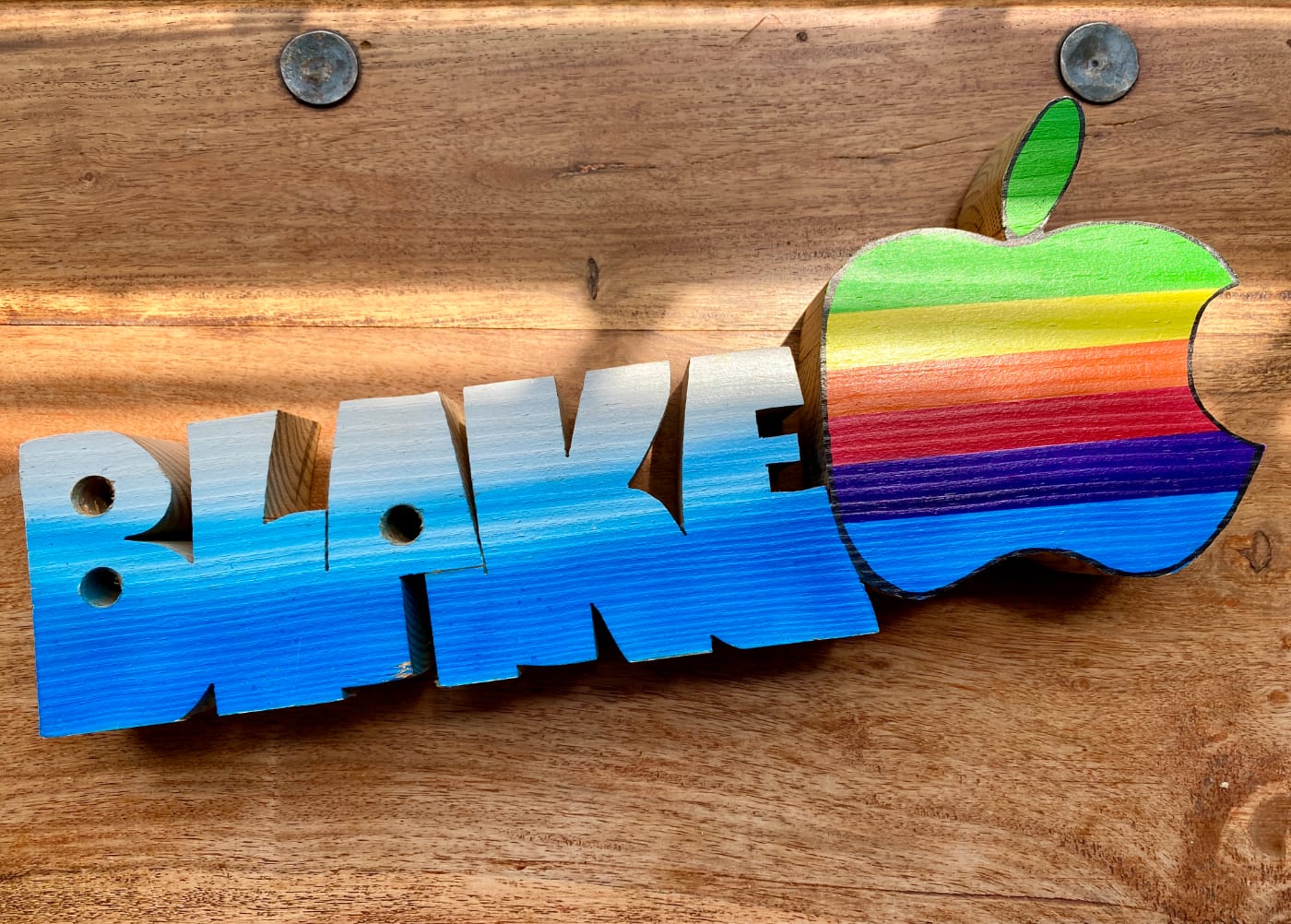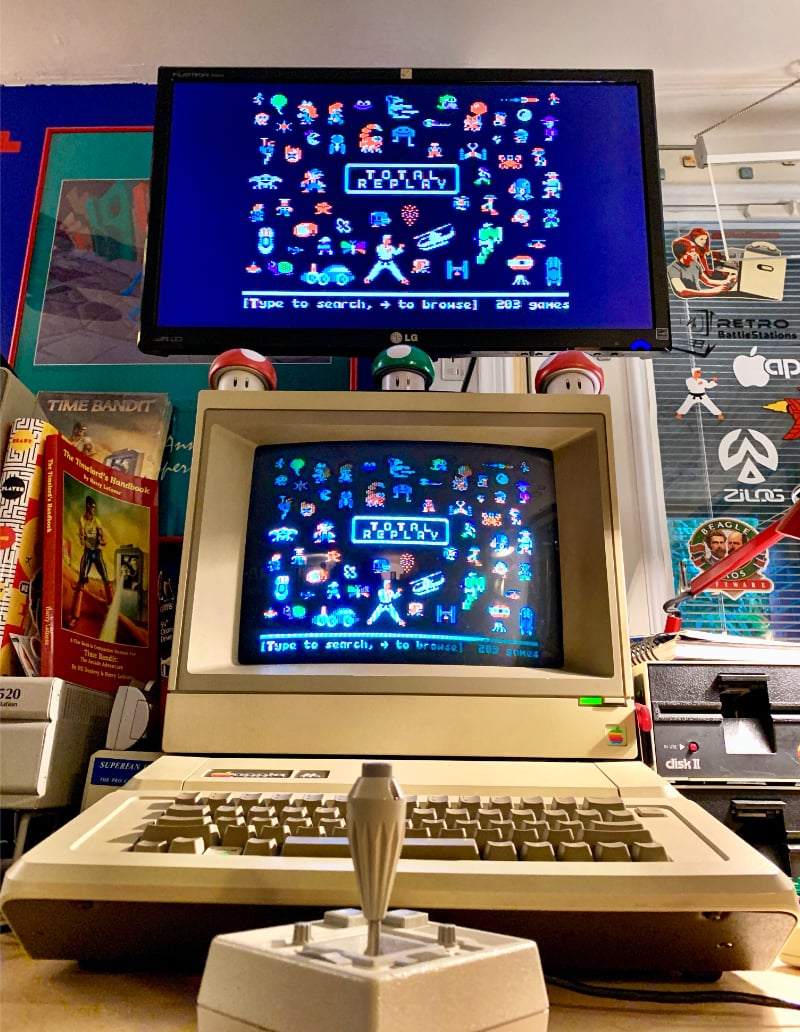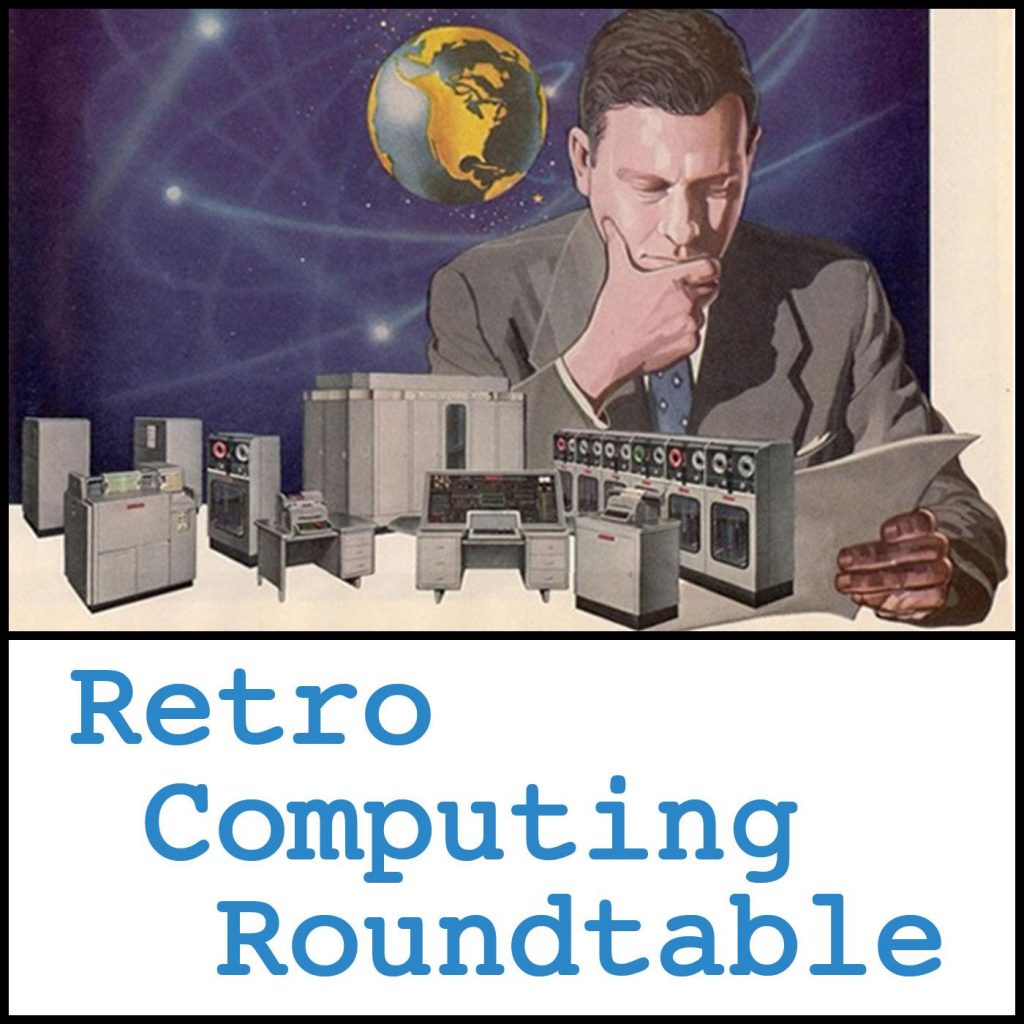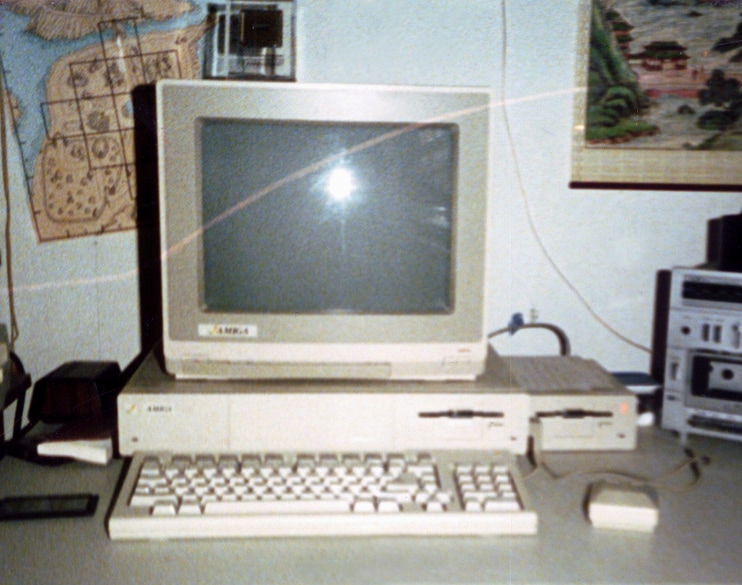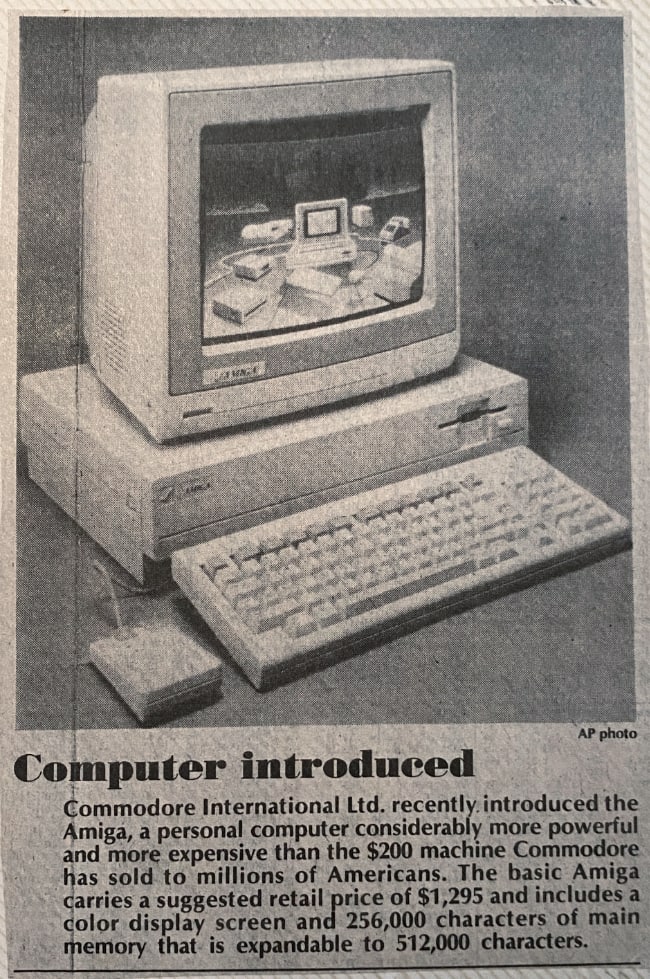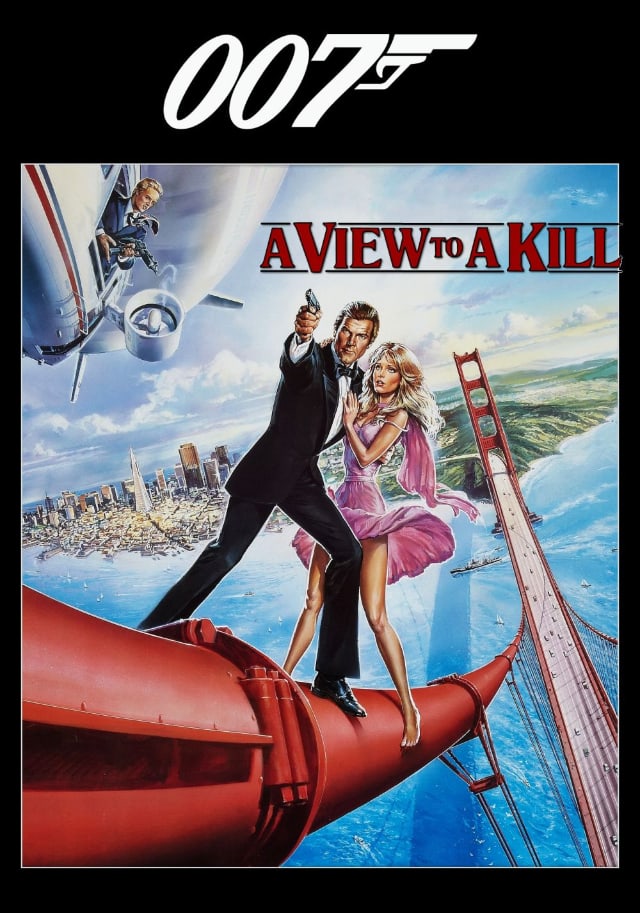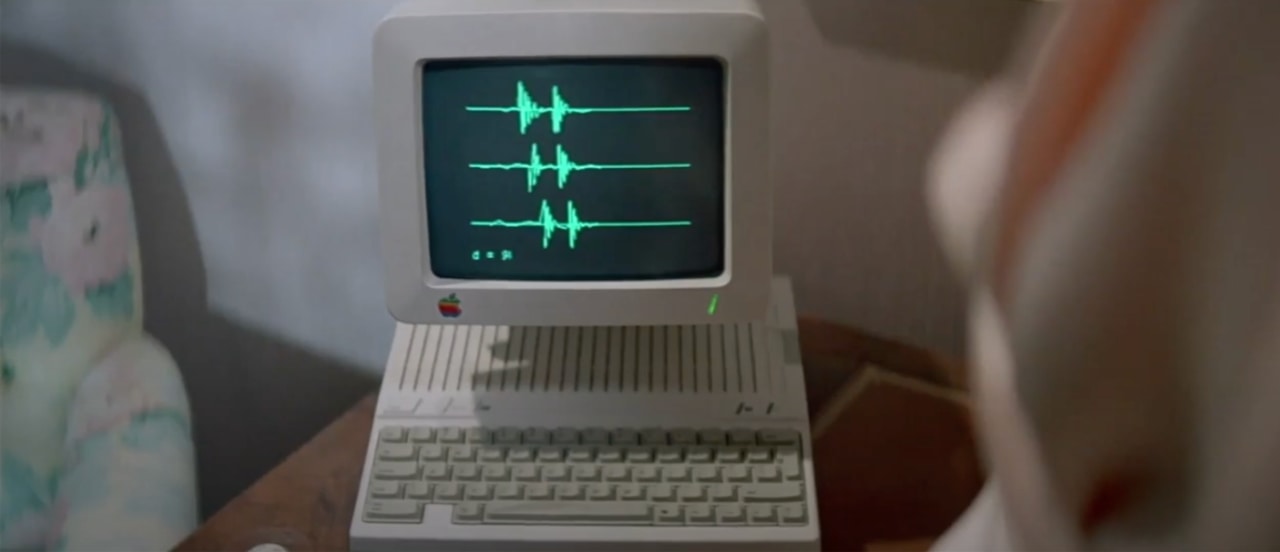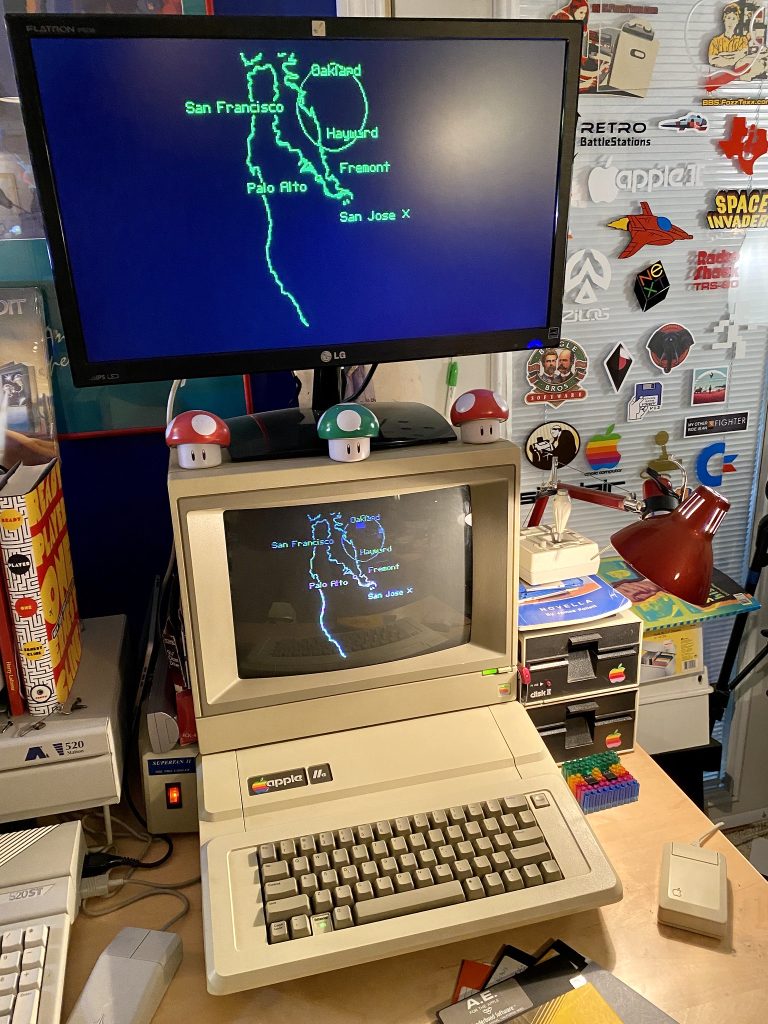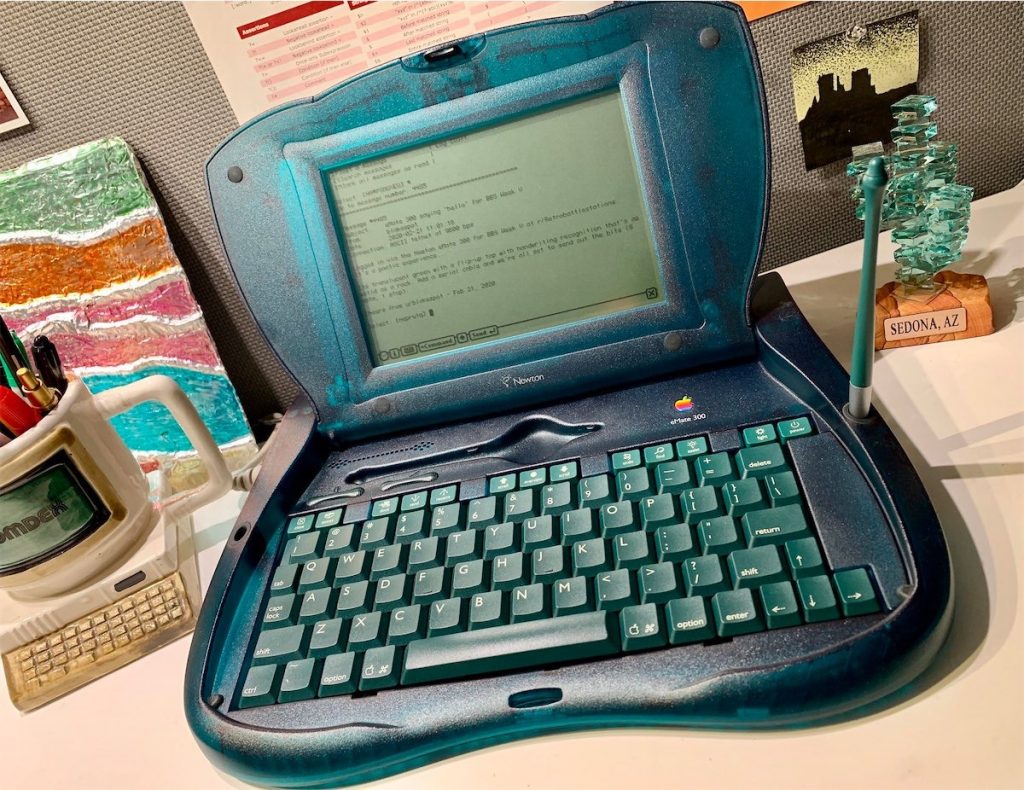
In October 1985 I purchased the first Amiga sold in the state of Virginia. It was a transformative experience to have that level of technology on the desk in front of me as a young geek. The Amiga 1000 was miles beyond any other consumer computer available on the market at the time in several respects. It boasted preemptive multitasking, a palette of 4096 colors (at a time when EGA‘s 64-color palette was considered impressive), four channel stereo digital audio, and a custom chipset with a graphics co-processor that allowed for incredible on-screen animation. In fact, it was ahead of its time to such a degree that much of the tech press didn’t know what to make of it, and so it was largely considered to be an expensive game machine, sadly, which did not help its adoption (especially in the states). I loved that system, but software was very slow in coming for the new platform and after a while I put an ad in the newspaper, sold it, and moved on to another system (which was a routine I carried out for quite a few years). But, I never forgot the magic of that first Amiga.
Many years later (in 2009), despite having an accelerated Amiga 2000 on the desk, I acquired another Amiga 1000 system to try and relive that 1985 magic. I enjoyed the machine greatly, but even though I expanded it with 2MB of FAST RAM and dual SCSI hard drives, it was always difficult to load it up with programs and put it to use, as compared to my fully networked Amiga 2000 with its 68020 accelerator, ethernet card, SD-based SCSI hard drive emulator, and HxC2001 floppy drive emulator. The Amiga 1000 was more of an island and, as such, it saw little use.
Flash forward to late 2020 when I read a post by AmigaL0ve in which he described a new expansion device made specifically for the Amiga 1000. It was called the Parceiro (“parceiro” meaning “partner” in Portuguese) and offered a very impressive and useful 3-in-1 upgrade in a svelte side-expansion about the size of a Hershey bar — and all for a reasonable price. I ordered one immediately.
The Parceiro was created by Amiga hobbyist and (now retired) once-CIO of the United States Space Force, David Dunklee. An ardent fan of the Amiga 1000 and the landmark moment in computing history that it represented upon release, David designed the Parceiro to help bring this innovative system up to speed with other members of the Amiga family, for which upgrades are much more readily available.
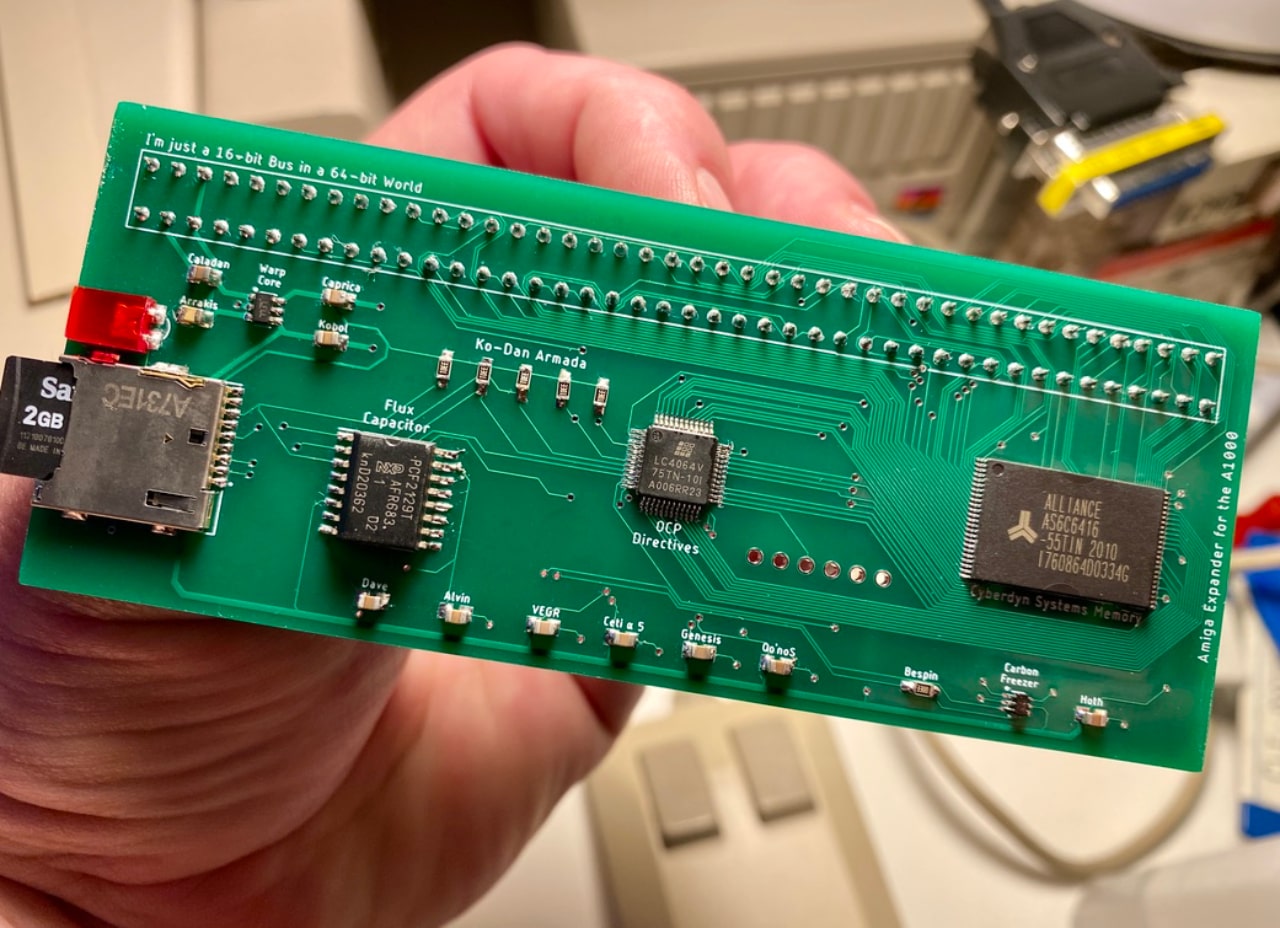
The Parceiro consists of a single circuit board that happens to be festooned with printed references to some of the best pieces of old school nostalgia that will bring a smile to the face of anyone who was a child of the ’80s. Sitting in a removable plastic enclosure, it attaches to the Amiga 1000’s side bus-expander connector and offers the following features:
- 8MB of auto configuring “FAST” RAM (the A1000 shipped with just 256K) with zero wait states (thanks to the use of SRAM rather than DRAM)
- A front-facing microSD card reader supporting a 2GB card (bundled) formatted as a FAT32 volume allowing it to be read/written to on a PC or Mac for moving files, using live in an emulator, etc.
- A Real-Time Clock (RTC) with onboard battery backup and a driver allowing it to be recognized my AmigaDOS at boot



